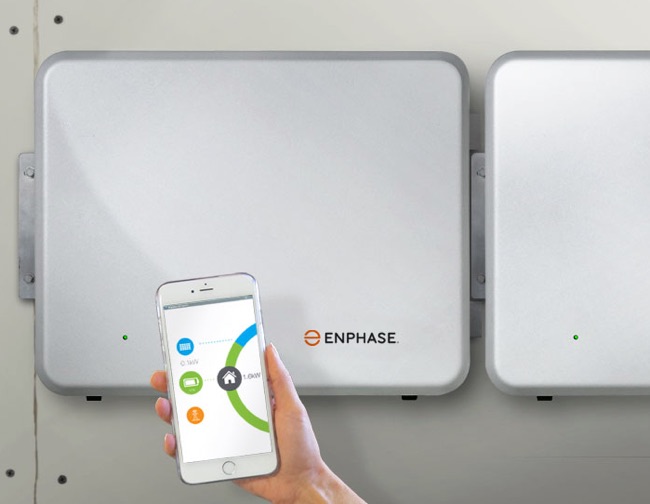U.S. inverter specialist Enphase has updated its modular 1.2 kWh AC-coupled energy storage system for customers in Europe, Australia and New Zealand. The new version of the ACB was released with a new battery cell supplier onboard and more fine-tuned TOU tariff management opportunities.
Weighting approximately 25 kg, the ACB system is easy to install and can be sized to ensure each system matches the unique energy needs of every household. Due to its modularity, more batteries can easily be added over time as energy usage changes.
The updated battery continues to use lithium-iron phosphate chemistry. Previously, the manufacturer had used prismatic cells from Japanese cell supplier Eliiy Power, but it did not identify its new partner in its latest press release.
The improved TOU software will make it possible for homeowners to optimize the value of their PV systems on the back of an expandable platform that serves evolving uses for energy storage, such as residential peak shifting and grid services.
“In addition to the supply chain and TOU software improvements, our new ACB system has an enhanced battery management unit designed to effectively monitor the health of the battery and increase the safety and reliability of the product,” said Mehran Sedigh, vice president and general manager of the energy storage business at Enphase Energy.
Sedigh added that Enphase has shipped over 30 MWh of residential energy storage systems to customers in Europe, Australia and New Zealand. “Our continued investment in the Enphase ACB reaffirms the commitment to our customers in these regions, in addition to reinforcing our target financial model,” he said.
Enphase has been active in Australia since 2013. In 2015, the manufacturer announced plans to debut its Enphase AC battery Down Under, and began shipments in 2016. It explained at the time that Australia had been identified as an ideal launch market for the ACB system because of its high levels of PV penetration combined with falling FIT rates for rooftop solar.
In 2016, Enphase opened an R&D facility in Christchurch, New Zealand, with an investment of AUD $4.4 million ($3.13 million). The facility is designed to support the company's internationalization and drive innovation and synergies between home storage and power conversion technologies.
With the latest product release, the company said it had refreshed its portfolio in the run-up to the release of the Enphase Encharge residential battery product family, which is expected to be available in capacities of 3.3 kWh, 10 kWh and 13.2 kWh. The Encharge battery is designed to be an integral part of Ensemble, an energy management platform that integrates controls for both off-grid and grid-tied solar-storage systems. It will retain key product features, including ease-of-installation, safety, modularity and scalability, and is expected to add features such as backup, outdoor rating, and faster charging and discharging.
This content is protected by copyright and may not be reused. If you want to cooperate with us and would like to reuse some of our content, please contact: editors@pv-magazine.com.




By submitting this form you agree to pv magazine using your data for the purposes of publishing your comment.
Your personal data will only be disclosed or otherwise transmitted to third parties for the purposes of spam filtering or if this is necessary for technical maintenance of the website. Any other transfer to third parties will not take place unless this is justified on the basis of applicable data protection regulations or if pv magazine is legally obliged to do so.
You may revoke this consent at any time with effect for the future, in which case your personal data will be deleted immediately. Otherwise, your data will be deleted if pv magazine has processed your request or the purpose of data storage is fulfilled.
Further information on data privacy can be found in our Data Protection Policy.